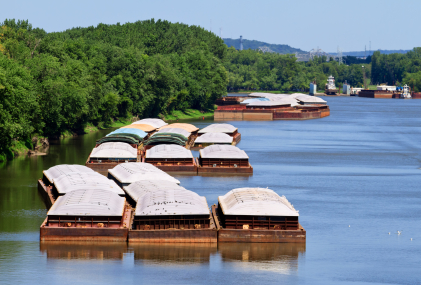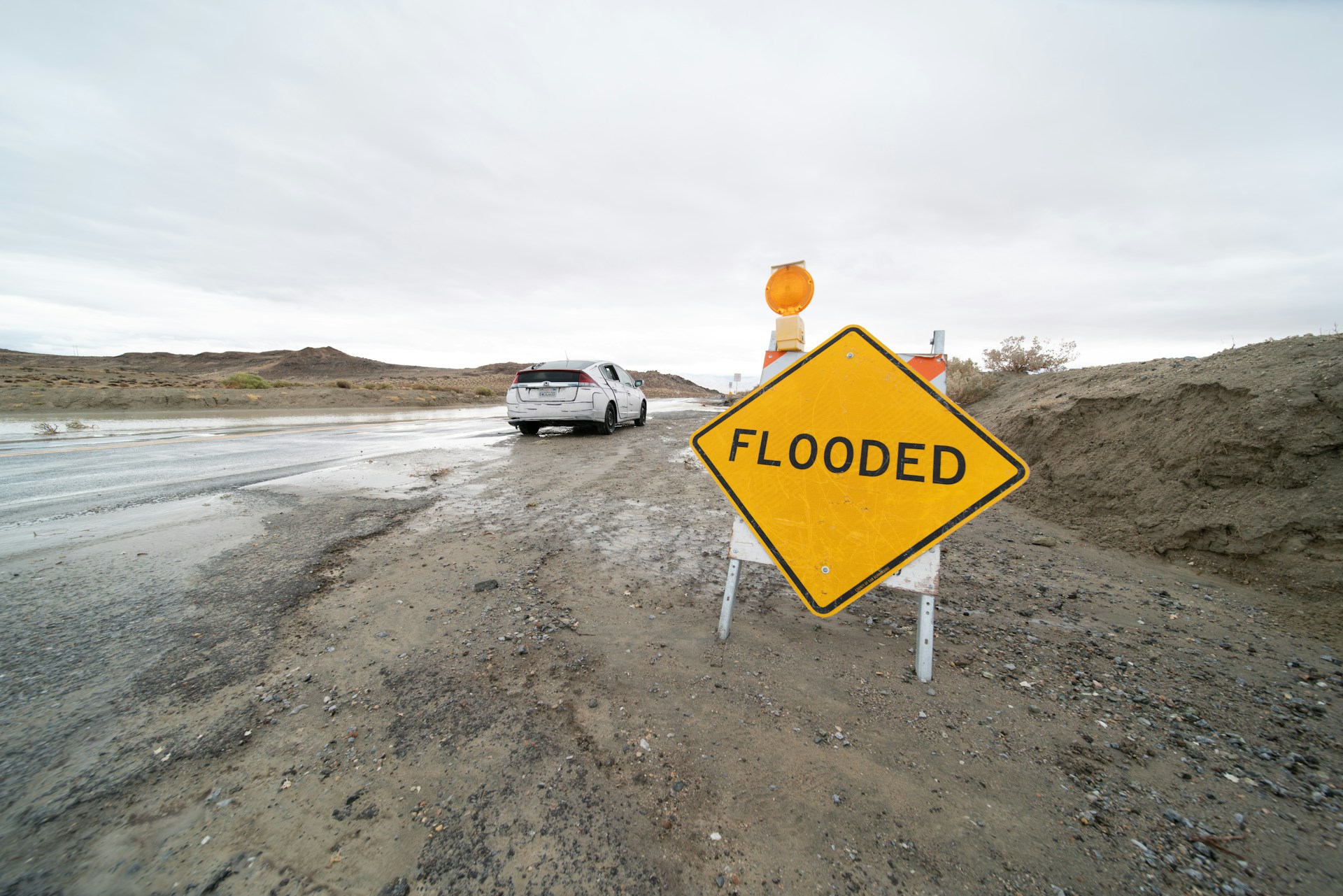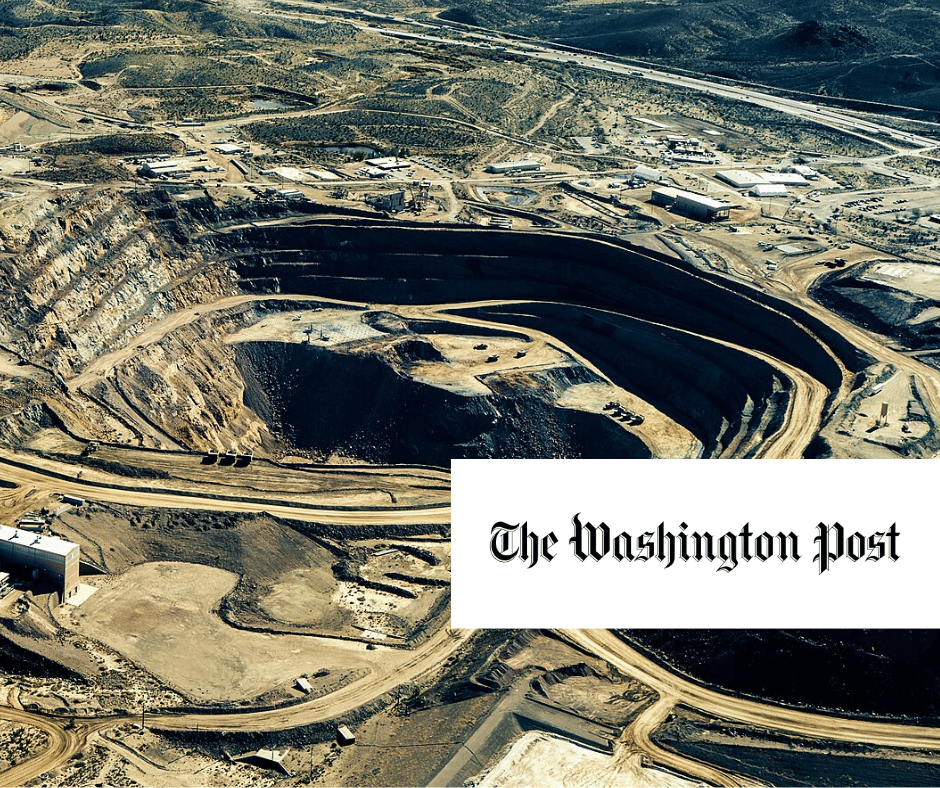Addendum September 2013: Congressman Whitfield reintroduced his bill in the 113th Congress. H.R. 1149 Waterways Are Vital for the Economy, Energy, Efficiency, and Environment Act of 2013 (WAVE4 Act).

Congressman Ed Whitfield (R-KY) is proposing a Riverboat Ripoff. His bill H.R. 4342, titled the Waterways Are Vital for the Economy, Energy, Efficiency, and Environment Act of 2012 (WAVE4 Act), would bail out commercial barge operators from paying most of their share to construct the locks and dams that make navigation possible on much of the nation’s waterways. Even though taxpayers already cover nearly 90% of the cost to build and maintain the inland navigation system that makes their businesses viable, this bill proves even that’s not enough for some special interests. In exchange for a miniscule increase of six cents on the diesel fuel tax, H.R. 4342 proposes to effectively eliminate a cost-sharing responsibility that has financed inland waterways for more than 30 years. It would also stick taxpayers, already saddled with $15 trillion in debt, with an additional $200 million bill each year. Congressman Whitfield and the bill’s six cosponsors–Rep. Costello (D-IL), Rep. Robert Aderholt (R-AL), Rep. Russ Carnahan (D-MO), Rep. John Duncan (R-TN), Rep. Tim Johnson (R-IL), and Rep. Terri Sewell (D-AL)–rightfully earn a Golden Fleece.
America’s Inland Waterways System
The inland waterways system is made up of rivers – mostly in the Midwest and East – that the
U.S. Army Corps of Engineers (Corps) maintains for navigation. Since Congress tasked the Corps with its first civil works mission to make inland waterway navigation possible in 1824, commercial users of these waterways paid little to cover the costs for construction and maintenance. It was only with the creation of the Inland Waterways Trust Fund (IWTF) as part of the Inland Waterways Revenue Act of 1978 that commercial beneficiaries began footing at least a portion of the bill for this system.
Under the IWTF, commercial users of waterways contribute to the trust fund through a modest tax (currently $0.20 per gallon) on fuel they use on 27 segments of natural and manmade waterways. The fund is then tapped to cover 50 percent of the costs for construction of new dams and navigation locks as well as major rehabilitation of existing facilities (defined as maintenance work costing more than $8 million). The other 50 percent of project costs is covered by taxpayers. Once these projects are completed, taxpayers — not users — also pick up 100 percent of the tab for operations and maintenance of the system, currently costing roughly $600 million annually. The aggregate federal expenditures result in taxpayer subsidy of more than 90 percent.
The Bankrupt Inland Waterways Trust Fund
The Inland Waterways Trust Fund is now effectively bankrupt. Structural flaws and years of mismanagement have brought the IWTF to the brink.
The inland waterways fuel tax, which is not tied to inflation, hasn’t been increased since the first term of the Clinton Administration. At its current level of $0.20 per gallon, the tax is expected to raise $77 million in FY13. Despite repeated Corps predictions of drastic increases in commercial freight traffic, the inland waterways system has seen declining or flat traffic for years. Thus, a number of projects have been built based on economic justifications that were never tenable. When the traffic failed to materialize, fuel tax revenues did not live up to predictions, so costs could not be recouped.
The cost-sharing arrangement has also led to projects that were not a good investment. Under the current system, cost-share applies to the construction and major rehabilitation of the locks and dams that make navigation feasible. Once a project is built, however, 100 percent of the cost for operating and maintaining that system falls on taxpayers. Operations and maintenance expenditures greatly exceed the costs of construction and major rehabilitation.
But rather than sober up to fiscal reality and propose to do their fair share, the special interests profiting from the IWTF have instead proposed a massive bailout that shifts billions of costs onto the backs of taxpayers.
H.R. 4342: A Golden Fleece
Rep. Whitfield’s H.R. 4342 would “fix” the IWTF by codifying recommendations made by barge operators to drastically increase the federal subsidy for inland waterway construction projects on the nation’s rivers.
H.R. 4342 is based largely on recommendations endorsed by the Inland Waterways Users Board, a taxpayer-subsidized, Federal advisory committee consisting predominantly of barge industry representatives. Their proposal, Inland Marine Transportation Systems (IMTS) Capital Projects Business Model, benefits the industry’s bottom line by short-changing taxpayers. The Users Board proposes increasing taxpayer subsidies for inland waterway navigation to a level that far exceeds all other forms of transportation, including highways, rail, and air travel. H.R. 4342 would set this proposal into law. The bill also mandates the Corps create a 20-year program for making capital investments on inland waterways.
Currently, the industry provides only about $80 million per year to the IWTF through the $0.20 per gallon fuel tax, which has gone unchanged for 16 years. Expenditures from the trust fund, which equal roughly what is raised annually, are matched dollar-for-dollar by the U.S. Treasury. 100% of the operations and maintenance costs–around $600 million–are also provided by federal taxpayers.
But this isn’t enough for the Users Board and the special interests it represents. The capital investment strategy proposed by the Users Board and endorsed by H.R. 4342 would further increase the public subsidy for inland waterway construction and rehabilitation by about $200 million annually, while adding major additional taxpayer obligations for operating and maintaining the inland waterways system.
The table below details the changes proposed by the inland waterways users to longstanding cost-share obligations in order to transfer industry costs onto the U.S. Treasury and federal taxpayers.
|
Inland Waterways Trust Fund Cost-Share Obligations |
||
|
Project Type |
Current Law |
IMTS Recommendations |
| New Lock Construction |
50% public – 50% IWTF |
50% public – 50% IWTF |
| Lock Rehabilitation above $100 million |
50% public – 50% IWTF |
50% public – 50% IWTF |
| Lock Rehabilitation below $100 million |
50% public – 50% IWTF |
100% public |
| New Dam Construction |
50% public – 50% IWTF |
100% public |
| Dam Rehabilitation |
50% public – 50% IWTF |
100% public |
| Cost Overruns |
50% public – 50% IWTF |
100% public |
The audacity of this proposal is breathtaking. It represents a blatant attempt to further socialize risk and privatize profits by gutting an already emaciated cost-sharing scheme. The proposal does offer to increase the fuel tax for the first time in 16 years by 6 cents. But this miniscule increase would be used for a decreasing number of projects and significantly increase the share of costs borne by taxpayers.
Bizarrely, the proposal treats locks and dams as if they are independent of one another. Dams can be built for a number of reasons, such as flood control, hydropower generation, or navigation. But locks are constructed for one reason (navigation) and in only one place (next to a dam). You will never find locks on a river without a dam. And in the vast majority of cases on the inland waterways system, the rivers were dammed expressly to assist barge navigation in the first place. Furthermore, dams built for the purposes of navigation are poor at or incapable of performing functions such as flood control. Instead of maintaining the 50-50 split for constructing new dams and rehabilitating old ones–dams that are necessary for locks to work and navigation to be safe and profitable–the Board wants to shift 100% of the costs to taxpayers. It’s as if you decided when you drive to work you only use the seat in your car, so you should not have to pay for the engine.
Under this proposal, taxpayers would also become fully responsible for billions of dollars that currently are a shared responsibility. Lock rehabilitations costing less than $100 million would become the total responsibility of taxpayers, while cost-share is maintained on rehabilitations costing $100 million or more. No lock rehabilitation in history has cost more than $100 million.
And the perennial issue for Corps projects–cost overruns caused by poor planning, unrealistic assumptions, or bad management–would become 100% the responsibility of taxpayers. No other public works project gets an overrun guarantee from Uncle Sam.
Why a Trust Fund is important
Prior to establishment of the IWTF, Corps projects costs were completely borne by federal taxpayers. This 100% subsidy encouraged inefficient pursuit of projects that at times had few if any national benefits. To help each federal dollar go further and ensure a true non-federal interest, the Water Resources Development Act of 1986 (WRDA 86) required that virtually all Corps projects have a non-federal cost-sharing partner, including inland navigation.
Cost-sharing enables federal dollars to get “more bang for the buck,” thereby spreading assistance to more local communities and distributing project costs more equitably. By requiring project beneficiaries to pick up a portion of the costs, it also serves as a hard dollars-and-cents measure of need. Finally, cost-sharing helps limit project size and cost, as well as encouraging local sponsors to pursue more efficient alternatives.
Conclusion
Inland waterways users are trolling for a bailout, plain and simple. For decades, commercial operators have shouldered less of the burden for maintaining the system that makes their business possible. Congress should oppose efforts to further weaken the inland waterway industry’s cost-sharing requirements by dismissing H.R. 4342, and the IMTS proposal, outright. At the same time, Congress should develop a new funding mechanism for construction and maintenance on our nation’s inland waterways.
At a time when the federal government’s financial resources are stretched to the limit, increasing an already excessive subsidy is something taxpayers cannot afford. H.R. 4342 is a Riverboat Ripoff, earning its author Rep. Whitfield a Golden Fleece Award.










